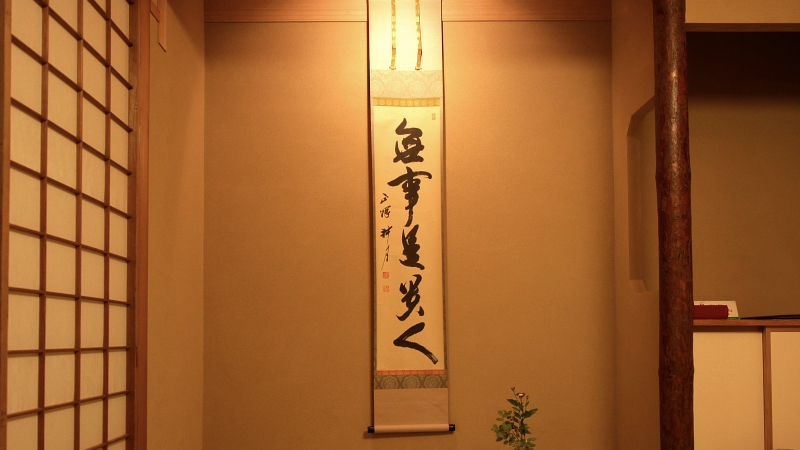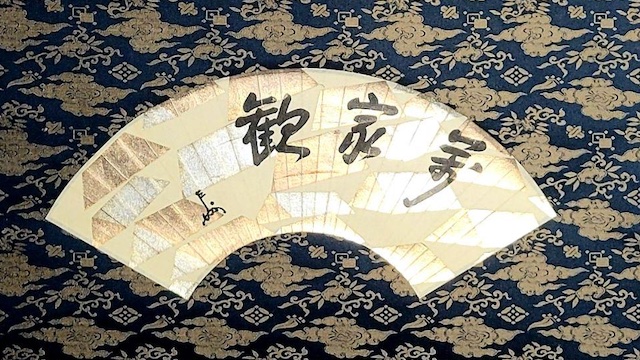
Kakejiku is a calligraphy or painting that is mounted on a scroll with scraps or paper and hung on the floor.
Kakejiku is also commonly referred to as 'axis' or 'width'.
The term kakejiku appears in the Song dynasty of China.
Kakejiku is the most important tool in the tea ceremony, as "Nanpo-roku" says, "There is no more important tool than Kakemono." is.
In the Muromachi period, many Chinese paintings were hung on hanging scrolls, but after Murata Juko received a calligraphy from Ikkyu Zenji as a proof of seal, instead of Buddhist paintings and Chinese paintings, it began to be hung. After the play of Fujiwara no Teika's "Ogura no Soshi," old calligraphy began to be used at tea ceremonies, and in the Edo period, old calligraphy, colored paper, and kaishi began to be hung, and from the Sotan period, paintings by tea masters began to be displayed. increase.
Hanging scrolls include:

Schoolmaster's lexical
家元